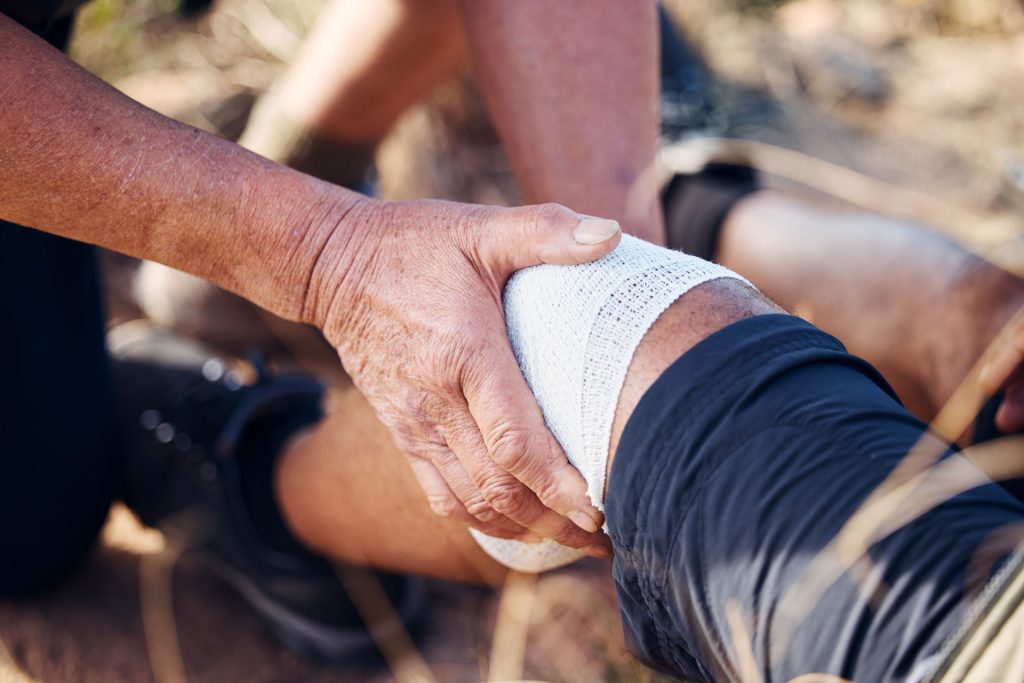Recovery from injuries or strains can often feel like a long and challenging process, but advancements in treatments like SoftWave Therapy are opening new doors for faster healing. This innovative, non-invasive approach harnesses acoustic wave technology to stimulate the body’s natural healing processes.
Whether you’re dealing with a sports injury, chronic pain, or a recent strain, SoftWave Therapy offers a promising solution for reducing discomfort and accelerating recovery. By enhancing blood flow, decreasing inflammation, and promoting tissue repair, it provides a pathway to regain mobility and get back to the activities you love with less downtime.
What is SoftWave Therapy?
SoftWave Therapy is an advanced, non-invasive treatment designed to harness the power of therapeutic acoustic waves to promote faster healing and pain relief. This innovative approach uses patented technology to produce highly effective shockwaves that stimulate biological regeneration at the cellular level. By initiating the body’s natural healing processes, SoftWave Therapy offers a safe and effective option for treating various injuries and strains.
The therapy works by delivering acoustic waves through a patented applicator that penetrates both superficial and deep tissues. This process triggers a biological response in the target area, enhancing blood flow, reducing inflammation, and promoting tissue repair and regeneration. Unlike invasive treatments that require surgery or medication, SoftWave Therapy is FDA-cleared and does not involve needles, numbing agents, or anesthesia.
One of the key benefits of SoftWave Therapy is its ability to accelerate recovery for individuals dealing with acute injuries, chronic pain, or overuse conditions. Whether it’s a sports injury or a persistent strain, this treatment helps reduce pain and downtime, making it an ideal solution for people eager to return to their daily activities or physical routines.
Additionally, the therapy stimulates resident stem cells and activates cellular receptors to further aid in the healing process, restoring tissue elasticity and functionality. With quick session times and no known side effects, SoftWave Therapy is reshaping the way injuries and strains are treated, offering a straightforward path to recovery with long-term benefits.
Related: SoftWave Therapy for Joint Pain Explained in Simple Terms
Benefits of SoftWave Therapy for Injury Recovery

SoftWave Therapy stands out as a groundbreaking treatment option for individuals recovering from injuries or strains. This non-invasive and FDA-cleared therapy utilizes acoustic waves to trigger the body’s natural healing processes, offering an effective and safe alternative to surgeries or long-term medication use. Below is a closer look at its key benefits:
- Enhanced Blood Circulation
SoftWave Therapy significantly increases blood flow to the treated area. This brings essential nutrients and oxygen, speeding up recovery by nourishing damaged tissues. - Reduced Inflammation
The therapy helps modulate and decrease inflammation, which is often a barrier to recovery. By addressing swelling, it alleviates pain and promotes comfort during healing. - Accelerated Tissue Regeneration
By stimulating stem cells and cellular repair mechanisms, SoftWave Therapy supports the regeneration of damaged tissues. This is particularly beneficial for both acute injuries and long-standing chronic conditions. - Pain Relief Without Medication
SoftWave Therapy provides significant pain reduction without the need for drugs or injections, making it a safer option for those looking to avoid potential side effects or dependency. - Quick Recovery and Minimal Downtime
Unlike surgical procedures requiring weeks of healing, SoftWave Therapy demands no downtime. Patients can resume daily activities immediately after treatment. - Non-Invasive and Safe
With no need for anesthesia or invasive tools, SoftWave Therapy ensures a comfortable experience with minimal risk, suitable for a wide range of conditions.
SoftWave Therapy offers a holistic and innovative approach that not only aids injury recovery but also fosters long-term health and mobility.
Related: Everything You Need to Know About SoftWave Therapy for Pain Relief
Applications of SoftWave Therapy
SoftWave Therapy is a versatile, non-invasive treatment with a wide range of clinical applications, making it a valuable option for individuals recovering from injuries or dealing with chronic conditions. By utilizing advanced acoustic wave technology, this therapy is specifically designed to activate the body’s natural healing processes and enhance recovery across various medical disciplines.
For musculoskeletal issues, SoftWave Therapy is widely employed to treat joint pain, soft tissue injuries, and overuse conditions such as plantar fasciitis and tendinitis. Its ability to reduce pain and inflammation while promoting tissue regeneration makes it an effective option for addressing both acute injuries and long-term discomfort. Athletes particularly benefit from its application in sports-related injuries, as it helps accelerate recovery times and restore mobility without the need for surgical intervention.
Beyond musculoskeletal treatments, SoftWave Therapy has shown great promise in wound healing and regenerative medicine. It is especially effective in treating chronic wounds, diabetic foot ulcers, and second-degree burns, offering a safe alternative to more invasive procedures. By improving blood flow and stimulating cell repair, the therapy not only speeds up healing but also helps prevent recurring complications.
Additionally, SoftWave Therapy extends its benefits to urological and pelvic health conditions. It is used in managing issues such as pelvic pain and restoring functionality, providing a much-needed solution for conditions often difficult to treat through conventional methods.
This innovative approach is revolutionizing how injuries and chronic conditions are addressed by combining effectiveness with patient comfort, offering hope for a quicker, safer, and more comprehensive recovery.
Related: The Surprising Benefits of Shockwave Therapy for Plantar Fasciitis
SoftWave Therapy vs. Traditional Recovery Methods

SoftWave Therapy represents a modern, groundbreaking approach to recovery, offering distinct advantages over traditional methods. By focusing on natural healing and addressing the root causes of injuries, it avoids many of the drawbacks commonly associated with conventional treatments. Here’s a breakdown of how SoftWave Therapy compares:
- Non-Invasive vs. Surgical Risks
SoftWave Therapy is entirely non-invasive, requiring no incisions or anesthesia, unlike surgeries that carry risks such as infections, complications, or prolonged recovery times. - Natural Healing vs. Symptom Masking
While traditional treatments like medications and injections provide temporary relief by masking symptoms, SoftWave Therapy promotes true healing at the cellular level by stimulating blood flow, tissue repair, and stem cell activation. - Rapid Results vs. Extended Recovery
Patients undergoing SoftWave Therapy often experience quicker recovery times with minimal downtime. This contrasts sharply with surgeries or long rehabilitation programs, which can take weeks or even months. - Minimal Side Effects vs. Drug Dependency
SoftWave Therapy avoids the side effects typically associated with medications, such as dependency or adverse reactions. Its approach ensures safe and sustainable recovery. - Comprehensive Relief vs. Isolated Focus
Traditional methods often concentrate on isolated issues. SoftWave Therapy, however, treats both acute injuries and chronic conditions holistically, addressing pain, inflammation, and functionality.
For individuals seeking an effective, low-risk alternative to traditional recovery methods, SoftWave Therapy delivers a streamlined path to healing, redefining what’s possible in injury and strain recovery.
Related: Managing TMJ Disorders with Chiropractic Adjustments
The Role of SoftWave Therapy in Chronic Pain Management
SoftWave Therapy offers a groundbreaking approach to addressing chronic pain by targeting its root causes, rather than merely masking symptoms. This innovative treatment is non-invasive, utilizing acoustic waves to stimulate the body’s natural healing processes. The therapy is especially effective in cases of arthritis, tendonitis, fibromyalgia, and other chronic conditions, providing long-lasting relief and improved mobility.
Key benefits of SoftWave Therapy include:
- Non-Invasive Treatment
Unlike surgical procedures or injections, SoftWave Therapy involves no incisions or anesthesia, making it a safe choice with minimal risk. - Reduction of Pain and Inflammation
By increasing blood flow and releasing natural pain-relieving substances, SoftWave Therapy reduces inflammation and alleviates chronic pain. - Stimulation of Tissue Repair
The therapy promotes tissue regeneration and cellular repair by activating dormant stem cells, expediting healing in muscles, tendons, and joints. - Quick and Convenient Recovery
Sessions are brief, with little to no recovery time, allowing patients to return to normal activities quickly. - Long-Term Results
Its ability to address the underlying causes of pain ensures enduring relief, improving overall quality of life.
For residents of Muscoda, Wisconsin, there’s no better place to experience the benefits of SoftWave Therapy than Benson Chiropractic. Under the skilled care of Dr. Victor Benson, this cutting-edge treatment is transforming pain management and helping patients regain functionality without the risks associated with traditional methods. Take the first step toward lasting relief—schedule a consultation at Benson Chiropractic today!

